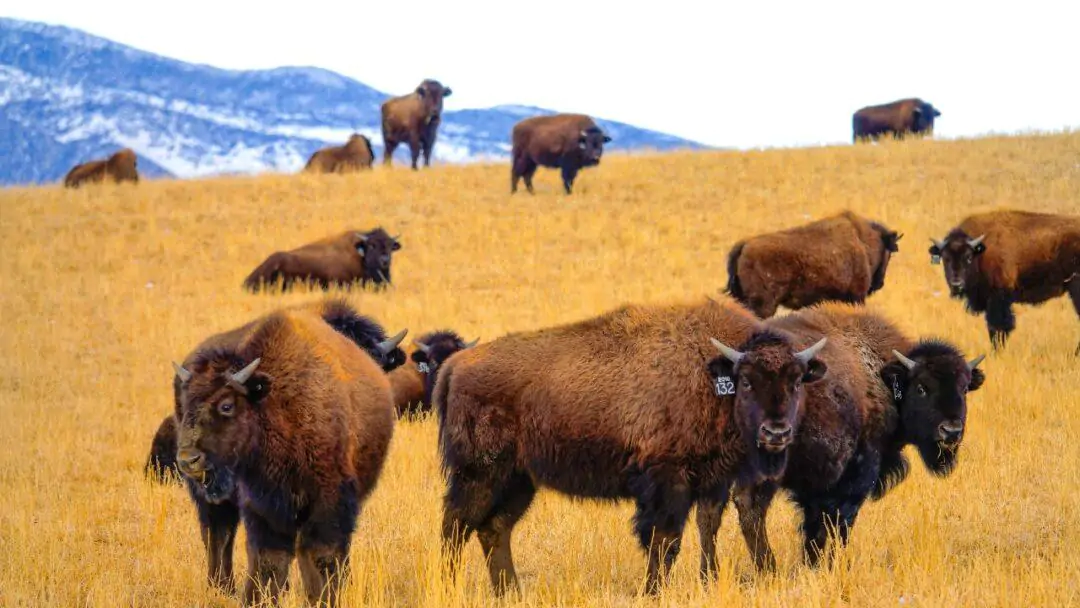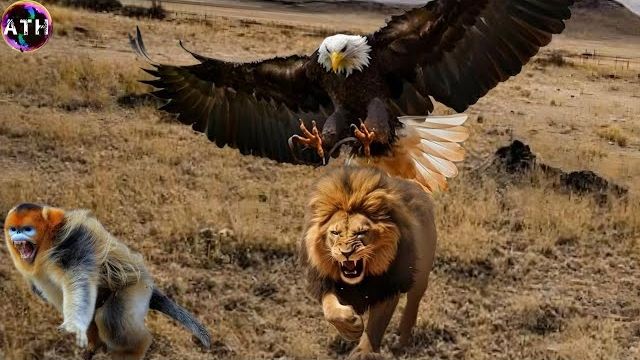Table of Contents

Introduction
Welcome to a one-of-a-kind journey into the majestic bison, a symbol of strength and tenacity. This article delves into the fascinating world of bison, revealing ten fascinating facts about all bison species. From mysterious facts to myth-busting, we’ll also look at the important function bison play in the ecosystem. Prepare to be captivated by these fascinating creatures.
10 Interesting Facts about Bison
- Species of Bison: There are two primary species of bison—the American bison (Bison bison) and the European bison (Bison bonasus), each with distinct characteristics and habitats.
- Size and Appearance: Bison are massive creatures, with males (bulls) weighing up to 2,000 pounds (907 kg) and standing approximately six feet tall. They possess a hump on their shoulders and a thick coat of fur, which can vary in color from dark brown to reddish-brown.
- Ancient Relatives: Bison have a rich evolutionary history and are closely related to extinct species like the steppe bison (Bison priscus) and the giant bison (Bison latifrons), which roamed the Earth thousands of years ago.
- Habitat: Bison once freely roamed across vast areas of North America and Europe. Today, they primarily inhabit grasslands, prairies, and forests, adapting to diverse ecosystems such as the Great Plains and the Białowieża Forest.
- Social Structure: Bison are social animals that live in herds, typically led by a dominant male. Within the herd, they exhibit complex communication through vocalizations, body language, and scent marking.
- Diet: Bison are herbivores, grazing on grasses, sedges, and other vegetation. Their strong and efficient digestive systems enable them to extract nutrients from tough, fibrous plants.
- Speed and Agility: Despite their massive size, bison can run at speeds of up to 35 miles per hour (56 km/h). Their muscular build and sturdy frame make them remarkably agile, allowing them to navigate various terrains with ease.
- Conservation Efforts: Due to extensive hunting and habitat loss, bison populations drastically declined in the past. However, concerted conservation efforts have successfully revived their numbers, although they remain a threatened species.
- Cultural Significance: Bison hold immense cultural importance for many indigenous communities, symbolizing strength, spirituality, and sustenance. They have been an integral part of Native American traditions for centuries.
- Ecological Impact: Bison significantly shape and maintain ecosystems. Their grazing patterns promote plant diversity, enhance soil fertility, and create habitats for other species. Their wallowing behavior also contributes to landscape modification.
Mysterious Facts and Myths
- Bison have long been tied with myths and stories, which depict their importance in numerous indigenous civilizations.
- According to certain tales, bison have magical powers or are spiritual messengers who represent wealth and harmony in nature.
- The narrative of the White Buffalo Woman, a venerated person in Lakota mythology, exemplifies the deep cultural and spiritual ties that bison have.
Importance to the Ecosystem
Bison play a crucial role in maintaining ecosystem balance:
- Grazing habits: Bison prevent any one species from dominating an area by selectively grazing on specific plants, encouraging biodiversity and maintaining the overall health of the ecosystem.
- Soil enhancement: The continual mobility of bison, as well as their fertilizing influence via dung dispersal, contribute to nutrient cycle and soil fertility.
- Keystone species: Bison, as a keystone species, influence the structure and operation of ecosystems, affecting other species that rely on their existence, such as birds, insects, and prairie dogs.
What is a bison?
A bison, commonly known as an American buffalo, is a huge and iconic North American mammal. They are related to domestic cattle and are members of the Bovidae family.
What do bison eat?
Bison are herbivores that eat mostly grasses and sedges. They have a sophisticated digestive mechanism that allows them to extract nutrients from tough prairie grasses, allowing them to thrive in their natural grassland settings.
How big do bison get?
Adult bison can grow to be quite large. Males (bulls) often weigh between 900 and 2,200 pounds (400 to 1,000 kilograms) and stand 5 to 6.5 feet (1.5 to 2 meters) tall at the shoulder. Females (cows) weigh between 800 and 1,100 pounds (360 to 500 kilograms).
What do bison eat?
Bison are herbivores that eat mostly grasses and sedges. They have a sophisticated digestive mechanism that allows them to extract nutrients from tough prairie grasses, allowing them to thrive in their natural grassland settings.
Where do bison live?
Bison once roamed a huge area of North America, from Canada to Mexico. The majority of wild bison can now be found in protected places like national parks and reserves. Some bison are also raised on private ranches for conservation or meat production.
Are bison endangered?
While bison populations have decreased drastically in the past owing to overhunting and habitat destruction, they are no longer considered endangered. The American bison, more especially the plains bison subspecies, is classified as “near threatened” on the IUCN Red List. Conservation initiatives have increased their numbers, but long-term survival requires sustained protection.
Can bison be domesticated?
Bison are wild animals with an inherent urge for self-preservation. They have been domesticated to some extent for ranching reasons, but they retain wild qualities and are not entirely domesticated like cattle.
How fast can bison run?
Bison are quite agile for their size, reaching speeds of up to 35 miles per hour (56 kilometers per hour). They may run quickly to avoid predators or during periods of heavy activity.
Do bison have any predators?
Bison once had natural predators such as wolves and Native American tribes that relied on them for food. Today, their main predators are largely limited to packs of wolves, while human activity, such as hunting, poses the greatest threat to their survival.
How long do bison live?
In the wild, bison generally have a lifespan of 15 to 20 years. However, in protected environments or on well-managed ranches, they can live into their mid-20s or even longer.
Why are bison important to ecosystems?
Bison are critical to the health and biodiversity of grassland ecosystems. Their grazing behavior aids in the regulation of vegetation development, which supports different plant species and provides habitat for other animals. Furthermore, their grazing patterns can have an impact on soil health and nutrient cycling.
Conclusion
The enthralling world of bison reveals a world of strength, tenacity, and ecological importance. These amazing species have stood the test of time, overcoming obstacles to recover their proper place in our ecosystems. Bison continue to captivate and inspire awe, from their historical roots to their impact on the environment. Let us conserve and safeguard these amazing creatures for future generations.
10 Unbelievable Facts About Llamas : NEXT POST




